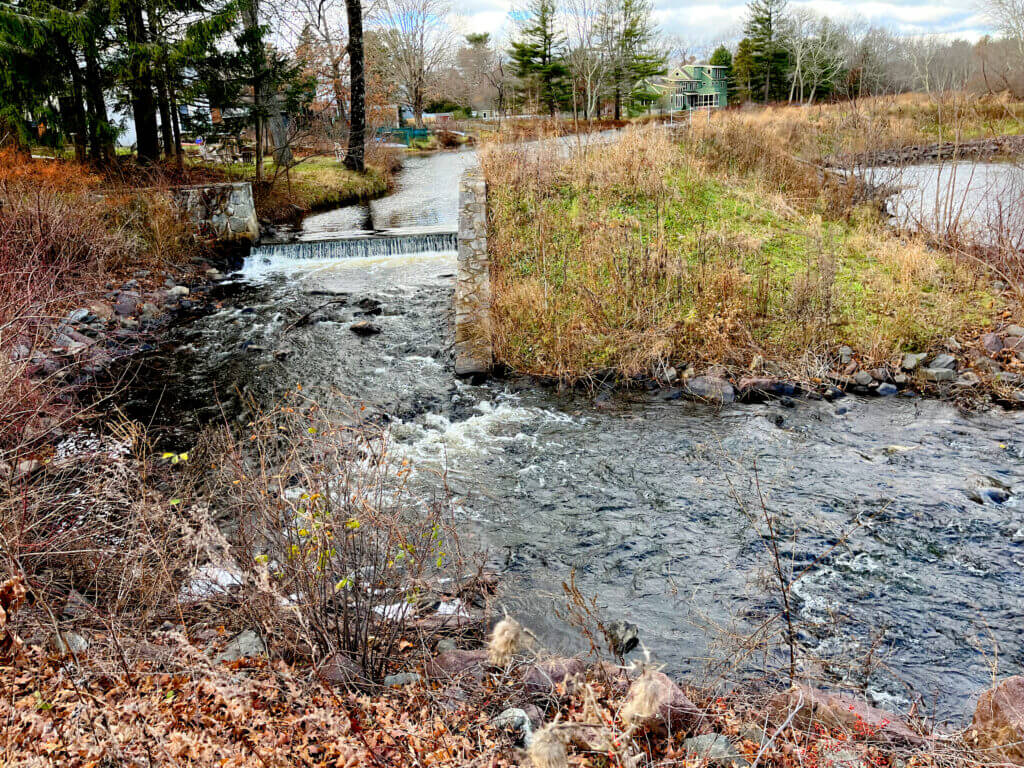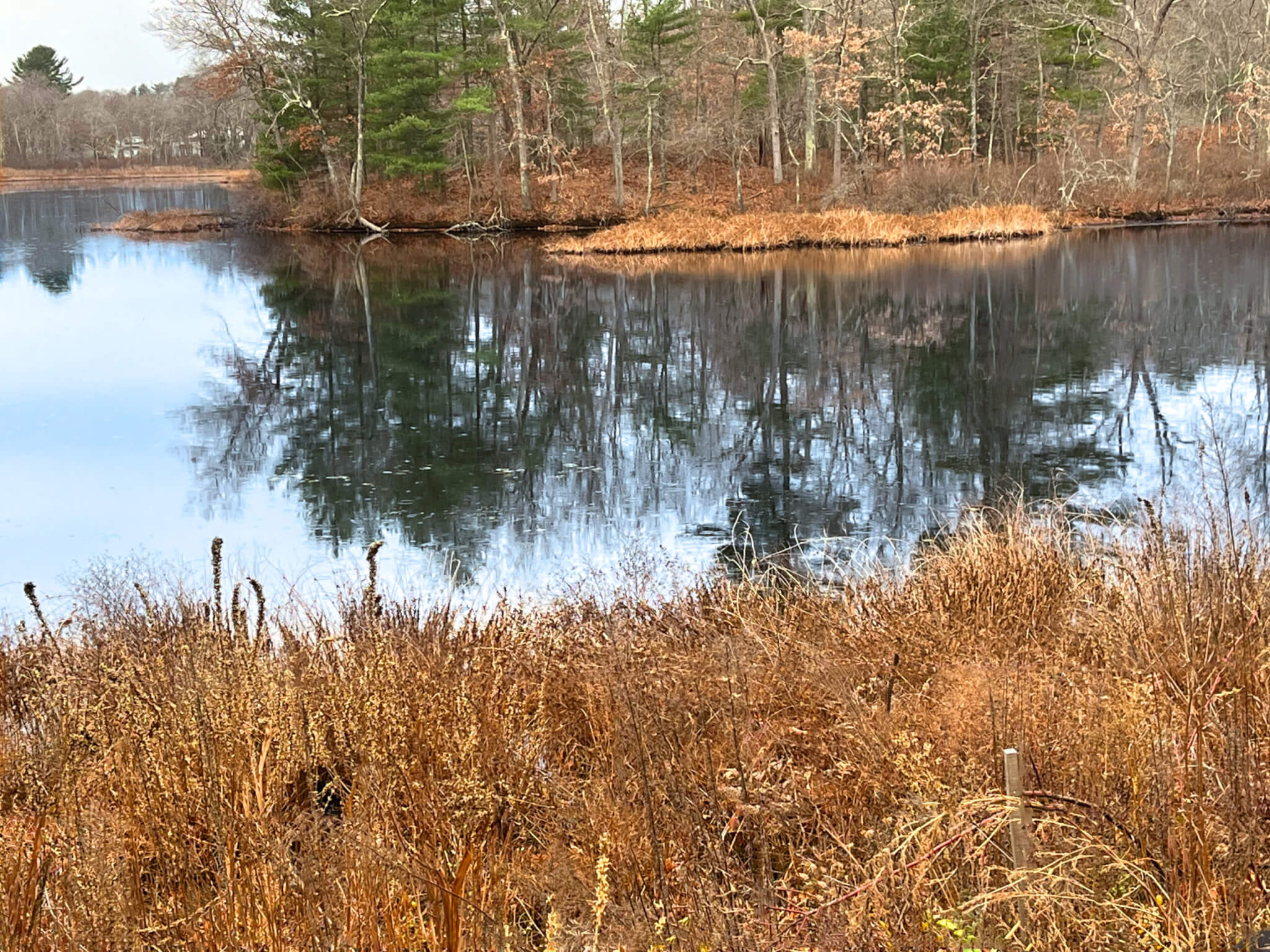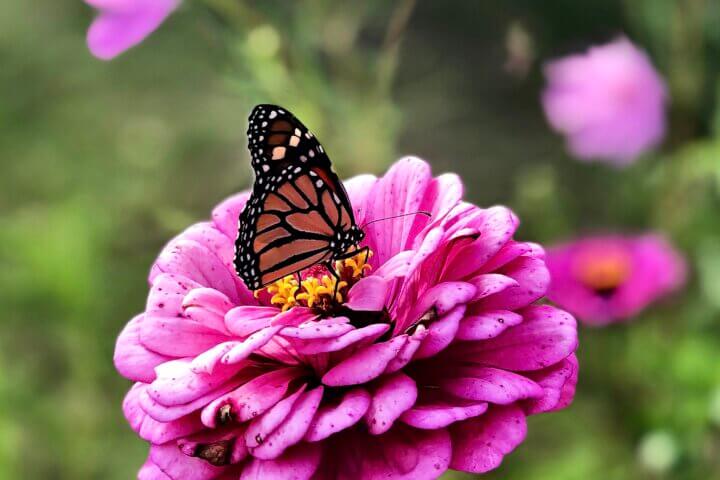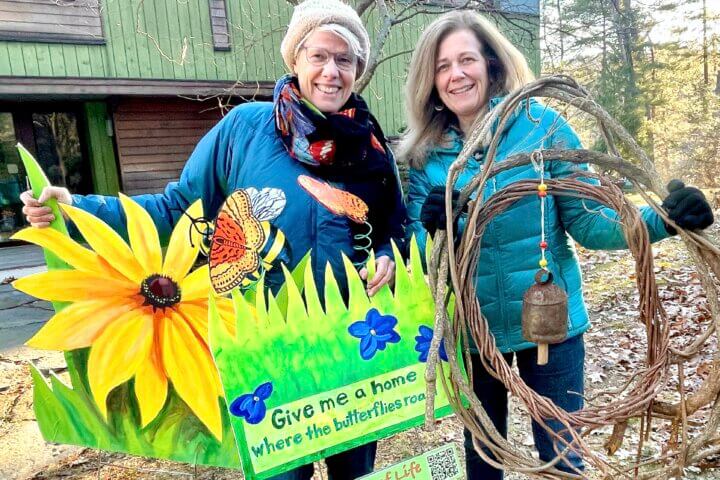For centuries, Concordians have enjoyed the 54 acres of silver-green waters and wooded isles of Warner’s Pond, sometimes called the Gateway to West Concord. Town history has unfolded along the pond’s shores, while its feeder stream, Nashoba Brook, holds the story of the continent’s earliest residents and the region’s once vibrant biodiversity.
Recently, community members have pushed for improved public access for more recreational enjoyment of the pond. But while demand for access has risen, the waterway’s ecological health has aggressively declined.
In 2018, $2.5 million was set aside for a proposed partial dredging of the pond which would potentially restore the pond’s water quality, but bids came in this September as high as $9 million, forcing Concord’s Natural Resource Commission back to the drawing board for new options.
“Once we have evaluated the options for Warner’s Pond we’ll be seeking robust community feedback”, reported NRC Director Delia Kaye at the Nov. 7 Select Board Meeting.
Kaye hopes to present the new proposals in time for a vote at the Spring 2023 Town Meeting and emphasized that the NRC would be working to fully explore all options.

Among the choices are abandoning the project, which would eventually lead to full pond fill-in; modifying the amount of dredging and allowing part of the pond to turn into wetlands; or removing the dam, at a cost of about $3 million.
Unlike White and Walden ponds, Warner’s is an impoundment pond, human-made from the damming of Nashoba Brook over 300 years ago. Nashoba Brook, Assabet River’s main tributary, is filling the pond with polluted sediment. What was once a 15- foot swimmable waterway is now a 3-foot average shallow, choked with invasive plants.
The pond is rapidly closing with many sections no longer passable. Recreational options including paddling, ice skating, and fishing are suffering. The Department of Environmental Protection has listed Warner’s Pond as “impaired” due to the proliferation of invasive plants.
Expanding mats of the dreaded invasive water chestnut float on Warner’s surface. Beneath the top zone tangle watermilfoil and fanwort. Purple loosestrife runs rampant. The non-native vegetable overgrowth has killed native fish and other aquatic creatures by lowering oxygen concentrations and skewing the pH balance in a process known as eutrophication.
The Nashoba Brook covers a 47-sq. mile watershed, 96 percent of which lies outside of Concord’s borders across six neighboring towns including Acton and Westford. Warner’s acts as a catchall for the entire watershed’s pollutants.
Nine storm drains dump from major roadways including Interstate 495 and Rt. 2’s rotary, where an average of 50-70,000 cars a day pass. A storm drain behind the service station funnels run-off into Warner’s. Thirty-six houses abut the pond, with new housing developments strung all the way up Nashoba Brook into Acton and beyond. Commercial properties, industrial sites and sewage treatment plants all contribute to runoff.
A 2018 Dredging Feasibility study predicted that water quality would remain clear for 100 years with partial dredging. Kaye expressed skepticism, suggesting 50 years was “more likely”. Still, Kaye noted, the cost spread out over 50 years could be worth it.
With funding from both the Community Preservation Act (CPA) and Concord town capital monies, a three-part plan was green-lighted in 2018: partial pond dredging, Gerow Park development, and a small public housing unit on Commonwealth Avenue.
The town went to work to build Gerow Park, which now nears completion. Construction for the new affordable housing unit broke ground this month.
Removal can be costly, but proponents argue that the ecologic benefits from riverine restoration far outweigh initial costs.
The NRC’s preliminary report states that if Warner’s dam is removed, 17 miles of the original stream and native riverine habitat will be reconnected and restored. Riverine paddling could become a new recreational activity.
The NRC stresses that the community must fully discuss all options and come to a mutual decision on how to proceed.
A 2012 Pond Assessment and Management Plan ruled out hydro-raking. Draining the pond fully or partially – a drawdown – to eliminate invasives was also rejected due to the trade-offs of wetlands’ harm as regulated by federal and state law. Pollutant monitoring of Nashoba Brook was deemed unrealistic due to the massive watershed lying mostly in other towns’ jurisdictions.
The study concluded that dredging was the best option for solving Warner’s sediment and nutrient load issues. Scooping out sediment from neglected man-made impoundment ponds can sometimes result in a reset on water quality. While dredging has been shown to cause some damage to existing ecology in the short term, studies show that native species repopulate and significantly increase for the long term. Voters at Concord’s annual town meeting will determine Warner’s clean up plan. It is scheduled for Sunday, April 30, 2023.





